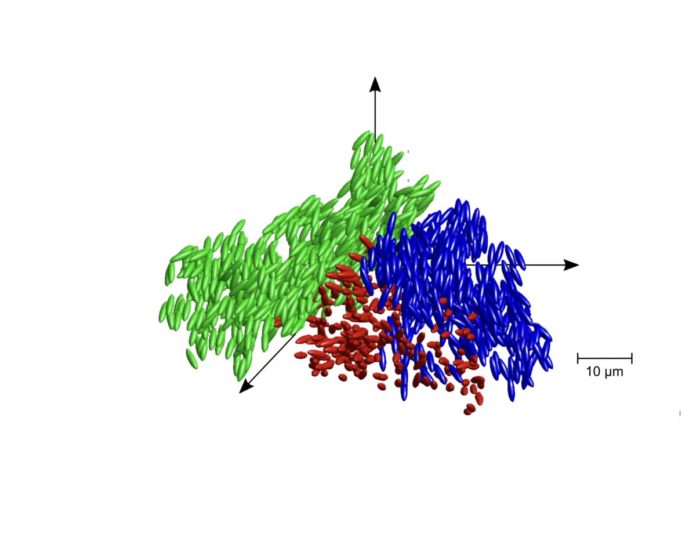Glass is a ubiquitous material, but it represents a major scientific conundrum. Contrary to what one might expect, the true nature of glass remains something of a mystery.
Glass is definitely but conventionally. Commonly, when material changes from a liquid to a solid-state, the molecules line up to form a crystal pattern. In glass, this doesn’t occur. Instead, the particles are adequately frozen completely still before crystallization happens.
A new study at the University of Konstanz has just added another layer of complexity to the glass conundrum. Scientists used a model system involving suspensions of tailor-made ellipsoidal colloids to discover a new state of matter, liquid glass, where individual particles can move yet unable to rotate – complex behavior that has not previously been observed in bulk glasses.
Colloidal suspensions are mixtures or fluids that contain solid particles which, at sizes of a micrometer (one-millionth of a meter) or more, are bigger than atoms or molecules and consequently appropriate to examination with optical microscopy. They are popular among studying glass transitions since they include many phenomena in other glass-forming materials.
To date, most experiments involving colloidal suspensions have relied on spherical colloids. The majority of natural and technical systems, however, are composed of non-spherical particles.
Using polymer chemistry, scientists manufactured small plastic particles, stretching and cooling them until they achieved their ellipsoid forms and then placed them in a suitable solvent.
Zumbusch, a physical chemistry professor and senior author on the study, said, “Due to their distinct shapes our particles have orientation – as opposed to spherical particles – which gives rise to entirely new and previously unstudied kinds of complex behaviors.”
Later on, scientists changed particle concentrations in the suspensions and tracked both the particles’ translational and rotational motion using confocal microscopy.
Zumbusch said, “At certain particle densities, orientational motion froze whereas translational motion persisted, resulting in glassy states where the particles clustered to form local structures with similar orientation.”
The scientists have termed liquid glass due to these clusters mutually obstructing each other and mediating characteristic long-range spatial correlations. These prevent the formation of a liquid crystal, which would be the globally ordered state of matter expected from thermodynamics.
In real, scientists observed two competing glass transitions – a regular phase transformation and a nonequilibrium phase transformation – interacting with each other.
Matthias Fuchs, professor of soft condensed matter theory at the University of Konstanz, said, “This is incredibly interesting from a theoretical vantage point. Our experiments provide the kind of evidence for the interplay between critical fluctuations and glassy arrest that the scientific community has been after for quite some time.”
The results suggest that similar dynamics may be at work in other glass-forming systems and may thus help shed light on the behavior of complex systems and molecules ranging from the very small (biological) to the very big (cosmological). It also potentially impacts the development of liquid crystalline devices.
Journal Reference:
- Jörg Roller, Aleena Laganapan, Janne-Mieke Meijer, Matthias Fuchs, Andreas Zumbusch: Observation of liquid glass in suspensions ellipsoidal colloids, PNAS, 4 January 2021. URL: DOI: 10.1073/pnas.2018072118
